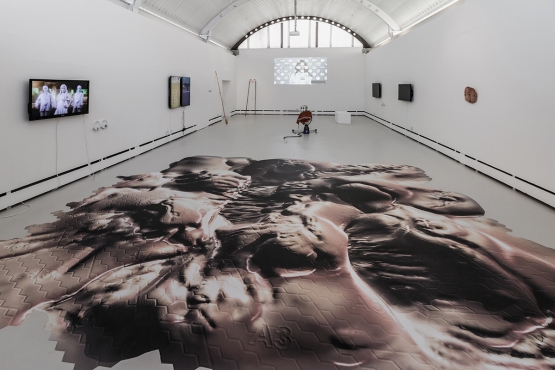An object that appears animated through its own momentum is Katja Novitskova’s, Swoon Motion, 2015. Again made in response to the theme of the uncanny valley, the work appears to suggest a possible new life form, one with occasionally recognisably human elements, assembled to an unknown pattern.
Another form of mask is Sidsel Meineche Hansen’s Cite Werkflow Ltd, 2015 for which she imprinted her own image into wet clay. The object has been glazed with fleshy tones that belie its brittle materiality.
In Sophie Jung’s two videos, www.hydontitellyousomethi.ng, 2013 and www.aittherewassomethingelseiwasgonnas.ay, 2014 a face-painted narrator speaks directly to camera. The ponderous narratives link disparate, often surreal, subject matter that reflect on overlooked details of everyday life. And in Jung’s two sculptures, Notis Otis, 2013, and Mirror Stage, 2013, narrative and objects are in a Kafkaesque and unsettling dialogue, with a bit of added ASMR .
Holly Herndon’s music video Home, 2014, generates a sense observing and being observed. Herndon’s omnipotent presence animates the gallery space every 15 minutes and layers of sampled sound and text generate a sense of unease; an allusion to an unknown, presumably digital, presence watching her every move and increasingly undermining her ability to know herself.
